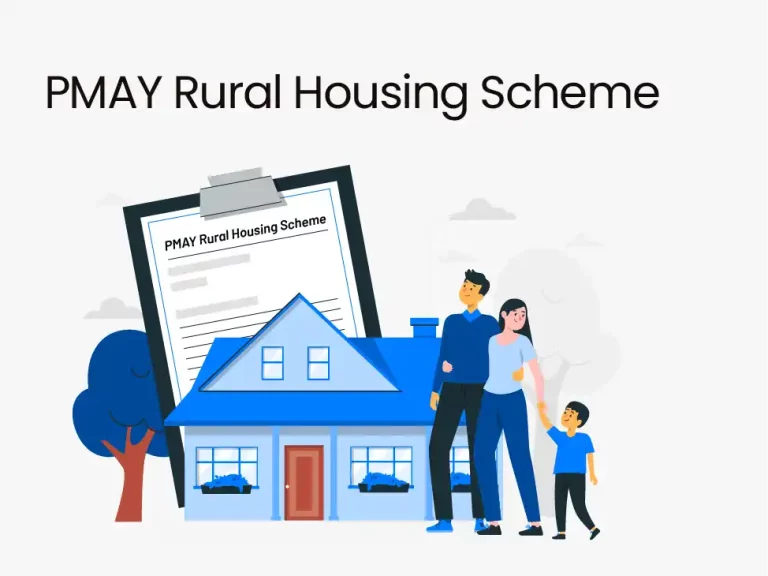Rashi Sood
Last Updated on 12th June 2025

Rashi Sood
Last Updated on 12th June 2025
The Pradhan Mantri Awas Yojana Gramin (PMAY-G), also known as the Prime Minister Awas Yojana Gramin, is one of the most transformative initiatives launched by the Indian Government. The PMAY scheme aims to provide permanent, pucca houses to rural families without proper shelter or living in kutcha houses. This pm awas gramin yojana is part of the broader Housing for All by 2022 mission, which aims to ensure that every family in India has access to a safe, affordable, and dignified living space. Read the blog further to learn about the key features, eligibility criteria, benefits, application process, and more about Pradhan Mantri Awas Yojana Gramin.
Table of Contents
Launched in 2016, PMAY-G aims to provide pucca houses with basic amenities like sanitation, electricity, and cooking gas to the rural poor. Through the PM Awaas Yojana Gramin Scheme, the government ensures that eligible families who do not have a proper home are provided with financial assistance to construct a new house or upgrade their existing structure. The houses built under this scheme are equipped with essential facilities such as clean cooking fuel (under the Ujjwala Yojana), electricity connections (under the Saubhagya Yojana), and toilets (through the Swachh Bharat Mission).
Under the Pradhan Mantri Awas Yojana Gramin, eligible rural households receive a financial grant of ₹1.20 lakh. This funding is aimed at covering the cost of construction, with the government ensuring that the beneficiary households are provided with enough support to build a sturdy and safe house.
The PMAY-G scheme ensures that the minimum unit size of the house is 25 square meters. This is an increase from the earlier 20 square meters, as the government recognized the need for slightly larger homes to accommodate necessities.
Suggested read: Benefits of PMAY
PMAY-G is aligned with various other government initiatives:
The financial aid is transferred directly into the bank accounts of beneficiaries through Direct Benefit Transfer (DBT). This method reduces the chances of corruption, ensuring that the funds reach the right people.
The PMAY-G ensures that beneficiaries are selected fairly using data from the Socio-Economic and Caste Census (SECC) 2011. This guarantees transparency in the entire process, and applicants can view the PMAY-G NIC IN Gramin List online to check their status.
In addition to the financial support, the PMAY Gramin scheme provides technical assistance, helping beneficiaries build durable houses. The construction process is monitored by local authorities to ensure the quality of materials and adherence to building standards.
Suggested read: PMAY Eligibility Criteria
Eligibility for the Pradhan Mantri Awas Yojana Rural is determined based on several criteria. The following groups of people are eligible to apply:
If you are searching for how to apply for PMAY Gramin online, then you can follow the steps mentioned below:
Before applying, check whether your name appears on the Prime Minister Awas Yojana Gramin list. You can visit the PMAY-G official website to verify if you are eligible.
The online application process can be done through a Common Service Centre (CSC). These centers are set up in rural areas and are equipped to help applicants with the entire process.
Applicants need to provide their details, such as Aadhaar number, bank account details, mobile number, and household address.
Along with the application form, the following documents must be submitted:
Once the application is submitted, the local authorities review the documents and ensure that all requirements are met. If the application is approved, the beneficiary is added to the PMAY-G Gramin List.
The government disburses funds in stages directly into the bank accounts of the beneficiaries. These funds are used for the construction of the house, with the final installment being paid once the house is completed.
If you have already applied for the scheme, you can track your application status online through the PMAY NIC in Gramin portal. This portal also provides updates on fund disbursements and construction stages, ensuring transparency in the process. Here’s how:
To apply for the PMAY-G scheme, the following documents are necessary:
The Pradhan Mantri Awas Yojana Gramin is not just about building houses; it’s about transforming lives. By providing financial support and integrating other key government schemes, PMAY-G is ensuring that rural families have access to a better quality of life, with safe housing and essential amenities. If you are eligible, don’t miss the opportunity to apply and be part of this life-changing scheme.
It is a government scheme designed to provide financial assistance to rural families for constructing pucca houses with essential facilities.
Families listed in SECC 2011 data who do not have a pucca house can apply for the scheme. Priority is given to women-headed households, Scheduled Castes (SC), Scheduled Tribes (ST), and other vulnerable groups.
Eligible beneficiaries receive ₹1.20 lakh in plain areas and ₹1.30 lakh in difficult areas to build a pucca house.
Applicants can visit the official website or Common Service Centres (CSC) to apply online. Required documents must be submitted for verification.
Visit the official PMAY-G website, enter your registration number, and check the status of your application.
Aadhaar card, bank account details, land documents, proof of income, and photographs are required for the application process.